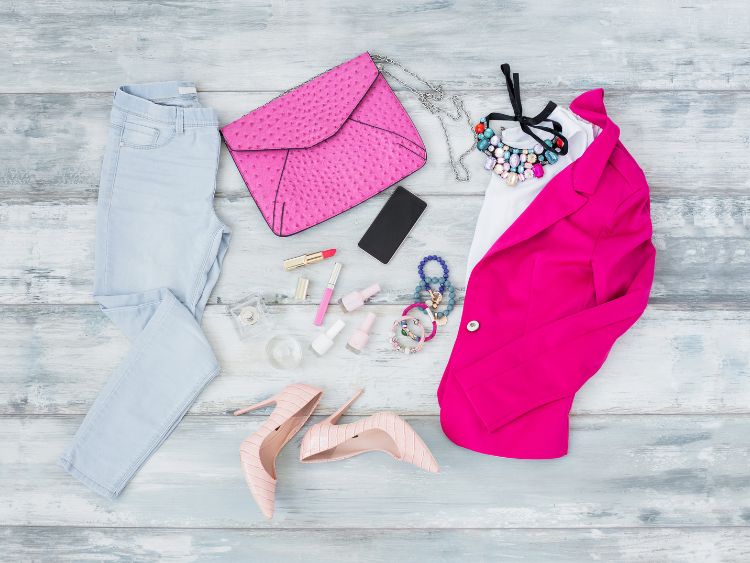Fast Fashion Defined
Ever wondered why trendy clothes pop up in stores almost as quickly as influencers post them? That’s fast fashion for you! Fast fashion refers to the rapid production of affordable clothing to meet ever-changing fashion trends. It thrives on the principle of speed—designing, producing, and distributing new styles in weeks instead of months. But hey, there’s more to it than just keeping up with the Joneses. Let’s dive into the world of fast fashion, unravel its threads, and explore the good, the bad, and the downright ugly.
The Core of Fast Fashion: What Does It Really Mean?
Fast fashion is the business model used by brands to churn out inexpensive, trendy clothing at breakneck speed. Its goal? To mimic runway designs and celebrity outfits, making them accessible to everyday shoppers. The faster the production cycle, the sooner a brand can cash in on the latest fashion craze.
Characteristics of Fast Fashion:
- High-Speed Turnaround: Clothes go from sketchpad to store shelves in a matter of weeks.
- Affordability: Items are designed to be budget-friendly, encouraging frequent purchases.
- Disposable Nature: The focus is on quantity, not quality, so most items aren’t built to last.
- Trend-Driven Collections: Styles change frequently, keeping consumers coming back for more.
The Rise of Fast Fashion: Where Did It All Begin?
The roots of fast fashion trace back to the late 20th century. With the globalization of supply chains and advances in technology, clothing manufacturers began to prioritize speed over everything else. Brands like Zara, H&M, and Forever 21 led the charge, creating a system where the time from design to delivery was drastically reduced.
Key Factors Driving the Boom:
- Globalization: Outsourcing production to countries with cheaper labor.
- Technology: Automated processes for cutting, sewing, and shipping.
- Consumer Demand: Shoppers love the idea of wearing runway-inspired pieces without breaking the bank.
The Impact of Fast Fashion: A Mixed Bag
While fast fashion may feel like a dream for budget-conscious trendsetters, it has significant downsides. Let’s break it down:
Social Impact
- Labor Exploitation: Many fast fashion brands rely on factories in developing countries where workers face poor wages and unsafe conditions.
- Job Creation: On the flip side, it does provide jobs to millions, albeit under controversial terms.
Environmental Consequences
- Resource Depletion: Fast fashion uses massive amounts of water, energy, and raw materials.
- Pollution: Textile dyeing is a top industrial polluter, and synthetic fabrics contribute to microplastic pollution.
Economic Influence
- Affordable Style: Consumers get more bang for their buck, enjoying new trends on a budget.
- Market Pressure: Smaller brands struggle to keep up with the rapid pace and low prices of fast fashion giants.
Breaking Down the Fast Fashion Lifecycle
How do these brands keep their shelves stocked with the latest trends? Here’s a snapshot of the process:
- Trend Spotting: Designers and data analysts identify emerging trends through social media, celebrity looks, and fashion shows.
- Rapid Design: Sketches are turned into patterns within days.
- Mass Production: Factories quickly produce large quantities, often in low-cost regions.
- Distribution: Clothes are shipped to stores or warehouses, ready for online orders.
- Consumer Purchase: Shoppers buy in bulk, thanks to affordable pricing and constant advertising.
- Disposal: Worn-out or outdated items often end up in landfills, continuing the cycle of waste.
Alternatives to Fast Fashion: Is There a Better Way?
If fast fashion feels like a necessary evil, don’t fret—there are ways to look fabulous while being mindful of its impact. Here are some alternatives:
Sustainable Fashion
- Brands like Patagonia and Reformation prioritize eco-friendly materials and ethical labor practices.
Thrifting
- Second-hand stores and online platforms like ThredUp and Poshmark offer stylish finds with a lower environmental footprint.
Capsule Wardrobes
- Focus on quality over quantity with timeless, versatile pieces.
DIY Fashion
- Get crafty by upcycling old clothes into trendy new outfits.
FAQs About Fast Fashion
What is fast fashion, and how is it different from traditional fashion?
Fast fashion focuses on quickly producing trendy, low-cost clothing, while traditional fashion prioritizes high-quality materials and longer production timelines.
Why is fast fashion bad for the environment?
Fast fashion contributes to water pollution, textile waste, and greenhouse gas emissions due to its resource-intensive and disposable nature.
Are all cheap clothes considered fast fashion?
Not necessarily. Some affordable brands, like Uniqlo, focus on durable, timeless designs rather than rapid trend turnover.
How can I identify fast fashion brands?
Look for frequent new arrivals, low prices, and minimal transparency about supply chain practices.
Can fast fashion ever be sustainable?
While improvements are possible, the current fast fashion model relies on speed and low costs, making sustainability a challenging goal.
Conclusion: Making Conscious Choices
Fast fashion is undeniably convenient and appealing, but it comes with hefty social and environmental costs. By understanding its impact, you can make smarter choices—whether that’s supporting ethical brands, thrifting, or simply buying less. Remember, every small step counts. Let’s wear our values on our sleeves (literally)!
Authoritative Links
- United Nations Environment Programme on Fashion and the Environment: https://www.unep.org
- Fashion Revolution: https://www.fashionrevolution.org
- The True Cost Documentary: https://truecostmovie.com
